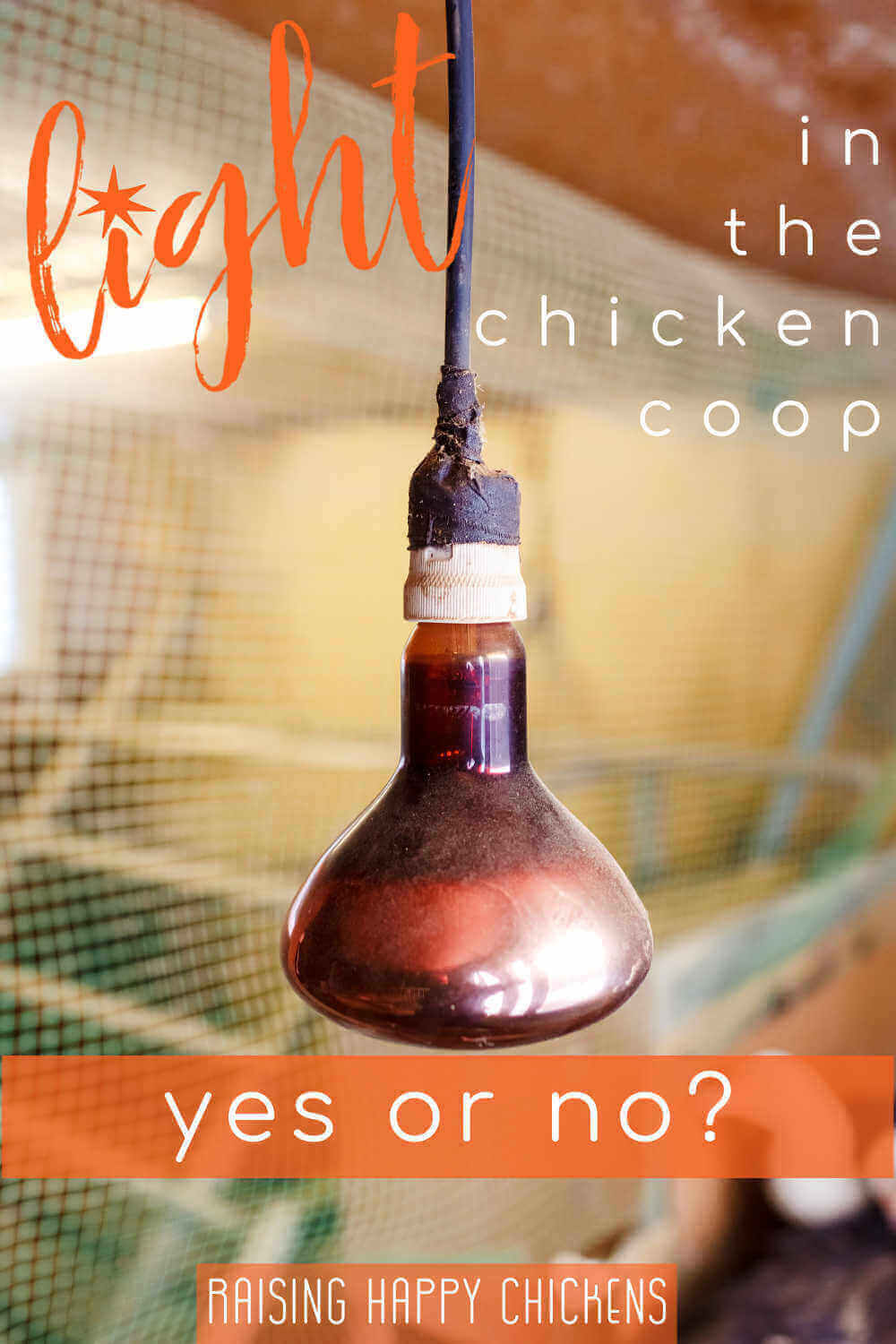Do chickens need light in the coop during winter?
As the days grow shorter and winter settles in, many chicken keepers start to wonder: do my hens need extra light in the coop to keep laying eggs?
It’s true that chickens are sensitive to day length. When daylight drops below about 14 hours, egg production slows and sometimes stops altogether.
That’s why commercial farms, and some backyard keepers, add light in the dark months.
But is it necessary? And if you do add it, what’s the safest way?
🪶 Featherlight Takeaways.
Quick insights from this article – especially helpful if you want quick answers about whether to add light to your chicken coop this winter.
- Chickens need 14–16 hours of light daily to lay consistently.
- Short winter days = fewer eggs unless you add light.
- Light intensity and colour matter. Soft white or red light works best, while dim, blue or green light is ineffective.
- Extra light won’t harm adult hens, but avoid it for birds under 16–20 weeks old.
- The safest option is a soft, morning light on a timer – never a heat lamp.
Free for subscribers!
Want a step-by-step checklist to help you decide whether to add light, and how to do it safely?
I've made a printable PDF guide that takes you through the key questions and dos & don'ts. My subscribers are given a free copy every year.
Looking for something specific? These links will help.
Why have extra light in the chicken coop?
As the days shorten, egg production naturally slows down. Hens start laying more as daylight increases in spring, reaching peak production when daylight hits around 16 hours a day(1).
That's nature's way of ensuring chicks hatch in warmer, safer months.
When daylight drops below 14 hours, the hormone flow that triggers egg laying slows too, and many hens stop laying altogether.
Commercial egg producers, and some backyard chicken keepers, add artificial light during the winter to keep hens laying for longer. The extra hours of light can trick a hen's body into continuing her normal laying cycle, even when it's dark outside.
For families who rely on a steady egg supply, or keepers who sell surplus eggs, extra light in the coop can make a big difference.
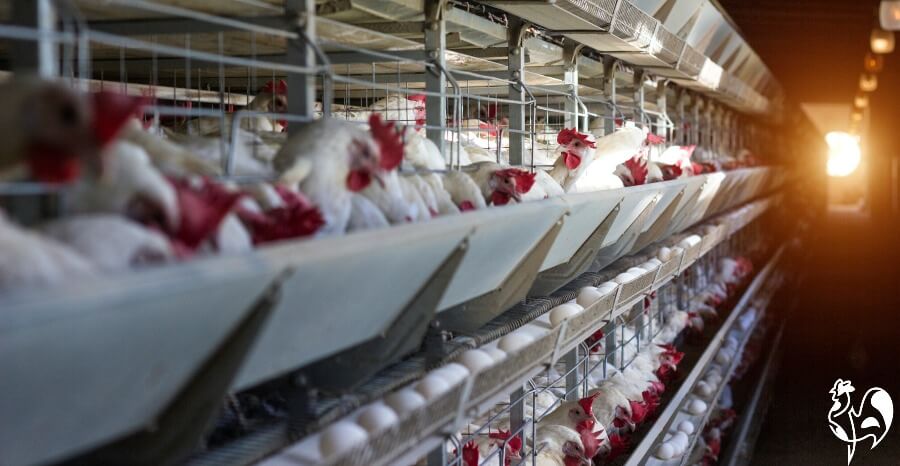 Commercial units add light for more eggs.
Commercial units add light for more eggs.The biology: how light affects chickens.
Chickens process light differently than we do. They don’t just "see" it with their eyes: a thin patch of skull above the eye allows light to reach the pituitary gland, which then signals the ovary to start producing eggs.
The key takeaway is about timing:
- 14 – 16 hours of daylight is the sweet spot. Hens will usually lay an egg a day during this window.
- Less than 14 hours: hormones aren’t triggered strongly enough, and laying slows or stops.
- More than 17 hours: multiple studies show production actually drops again(e.g. 2). So more is not better.
That’s why the length, consistency, and type of light all matter when deciding whether to add supplemental light in the coop.
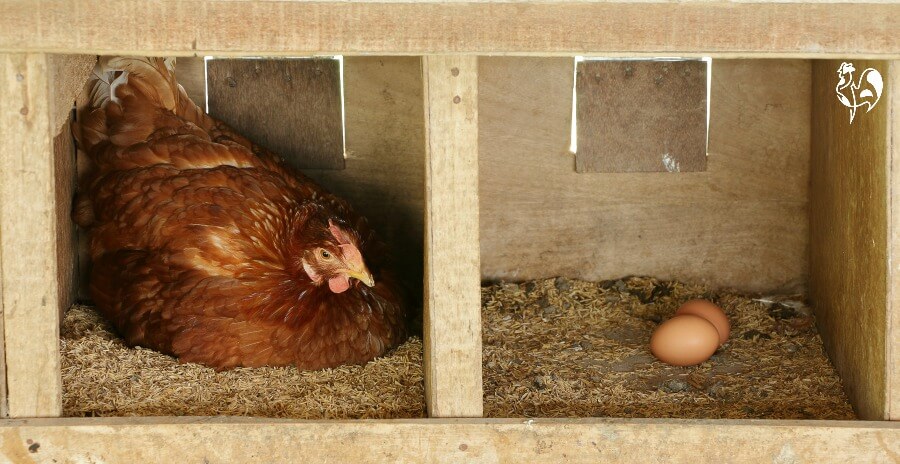
Does adding extra light harm chickens?
This is one of the biggest concerns chicken keepers have – but the research is clear:
- Adult hens: there’s no evidence that supplemental light shortens a laying hen's life. She is born with all the eggs she’ll ever produce. Light just affects when she lays them.
- Young hens: this is where research shows caution is needed. Giving light too early (before a hen reaches 16 – 20 weeks) can trigger egg production before the body is fully ready, leading to health problems(5).
- So the rule of thumb is simple: never add light until your hens are at least 16 weeks old – preferably over 20 weeks.
🐥 A note from my flock: this photo is Lulu, one of my Red Stars, when she was still a pullet (about 16 weeks old). At this stage, I would never add extra light: her body simply isn’t ready to handle laying yet.
If I wanted to add light (which I choose not to do), waiting until 20 weeks would give her the best chance of staying strong and healthy in the long-term.
So over 20 weeks, the decision is more about your own philosophy: do you want to keep your hens laying eggs without a break, or not?
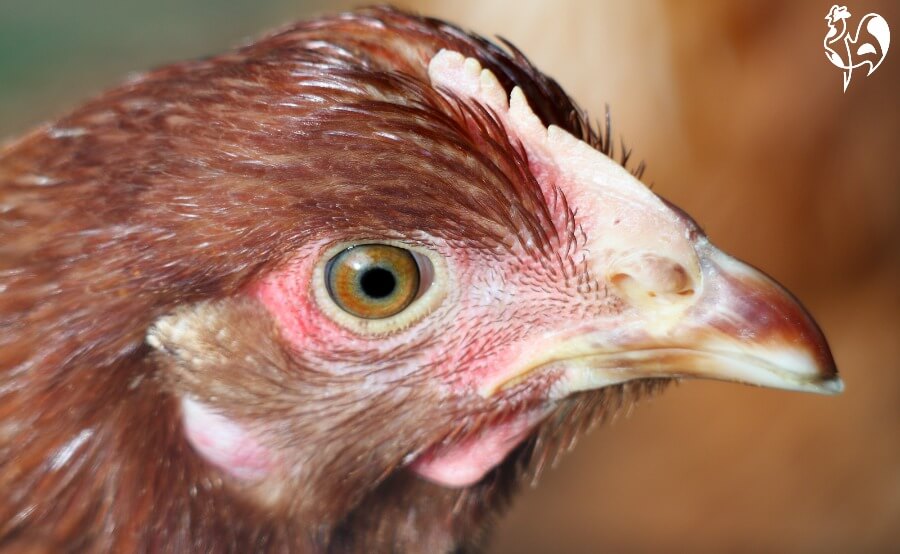
Does the type of light matter?
Yes. Studies show that both the intensity and the colour of light can make a difference(e.g. 2, 3, 4).
- Intensity: hens respond best to light levels between 5 and 15 lux, which is bright enough that you could comfortably read a newspaper inside the coop.
- Too dim, and it won't stimulate laying; too harsh, and it can stress the flock.
- Colour: here, research results are mixed. In general, white or red light is found to be more effective for maintaining egg production than blue or green.
- The key is to aim for between 14 and 16 hours of steady, gentle light each day, rather than worrying about precise lux readings or fancy bulb colours.
- For a backyard coop, a simple soft white bulb (closest to natural daylight) is a safe, practical choice.
Does extra light affect the quality of eggs?
No. Research(4) shows that while extra light may increase the number of eggs, it doesn't affect shell strength, yolk quality, or nutritional content.
The only indirect effect comes from winter conditions: with less chance to forage, hens may miss out on bugs and greens that naturally enrich their diet. But that's a diet issue, not a light issue.
So, as long as you keep feed balanced and supplement with a few healthy treats, you can expect the same quality eggs whether you add light or not.
For tips on how feed influences egg quality, take a look at my guide to what hens should eat.
Pros and cons of adding light in the coop.
Pros.
- More eggs through the year: there's no doubt that adding artificial light to the coop during winter months can stimulate egg production.
- Calmer, more sociable hens: studies(e.g. 2) show that 16 hours of light can reduce stress behaviours like fighting and feather pecking in confined winter flocks.
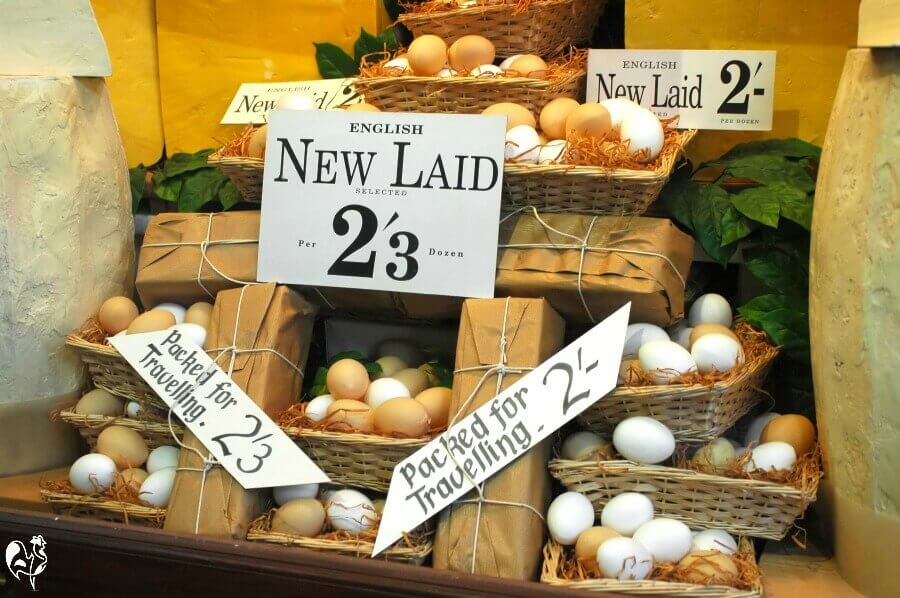
Cons.
- Fire risk: unsafe wiring or an exposed light bulb in a chicken coop can, and frequently does, lead to fire.
- Physical problems: for hens younger than 16 weeks supplemental light can cause their bodies to mature too early.
- Behavioural problems: too much light, or the wrong intensity, can spark aggression.
- Needs consistency: if a timer fails or you forget to turn lights on or off, hens can become stressed and even go into a moult.
- Extra cost: the cost of keeping lights on may be small but should be factored in.
How to light the coop: dos and don'ts.
If you've weighed up the pros and cons and decided that extra light makes sense for your flock, here's how to do it safely and effectively.
Need some help to decide?
Newsletter bonus: If you’d like a handy one-page version of these do's and don'ts to help you assess your own situation, my subscribers get a free checklist you can fill in online, or print and take into the coop.
Do...
- Add the light in the mornings. Work backwards from dawn to assess when the lights should go on and off. Allow for no more or less than between 14 and 16 hours.
- Use a timer for consistency. No need to dash out in the dark!
- Choose a diffused, soft white light that mimics daylight. The wattage will depend on the size of your coop. A safe option for small coops is a rope light like this one (affiliate link), fixed above the roosts, out of pecking range.
- Check your wiring and fittings are safe. Coop fires from faulty heat lamps and bulbs are sadly common.
- Reduce the hours of artificial light as spring brings longer days.
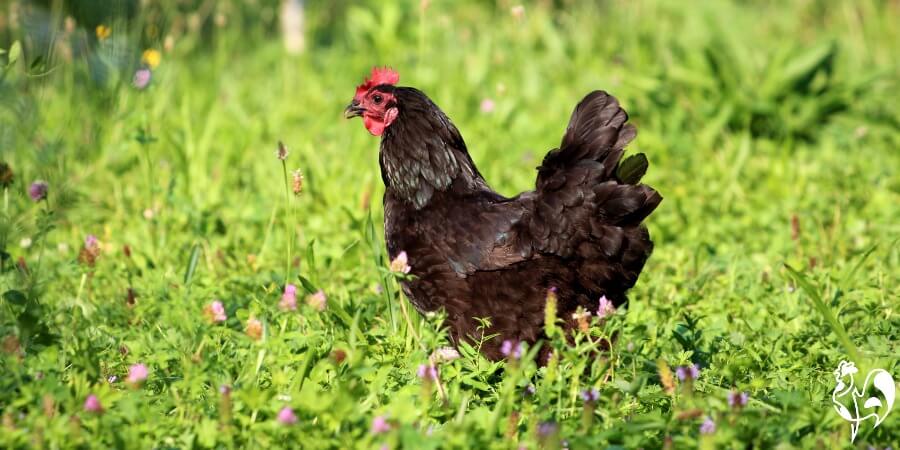 Once Spring arrives, decrease the hours of artificial light.
Once Spring arrives, decrease the hours of artificial light.Don't...
- Ever use a heat lamp. It's something entirely different, not necessary for laying, and it's one of the main causes of fires in chicken coops.
- Add light your coop in the evenings. Chickens need time to settle naturally as light fades gradually at dusk. A sudden blackout in the middle of the night will create anxiety and, potentially, injury.
- Forget consistency. If you suddenly withdraw the light, or forget to switch it on, or switch on and off at random, your hens are likely to go into a stress-induced moult.
- Start adding light when hens are less than 16 weeks old. Wait until they are 20 weeks or more.
How to have eggs without extra light.
Not everyone wants to run power into their chicken house. If that's you, there's another way to think about winter eggs, and it starts with the breeds you keep.
Here's my story.
🐥 A note from my flock: take a look at my egg collection during the summer. It’s brimming with eggs of every colour.
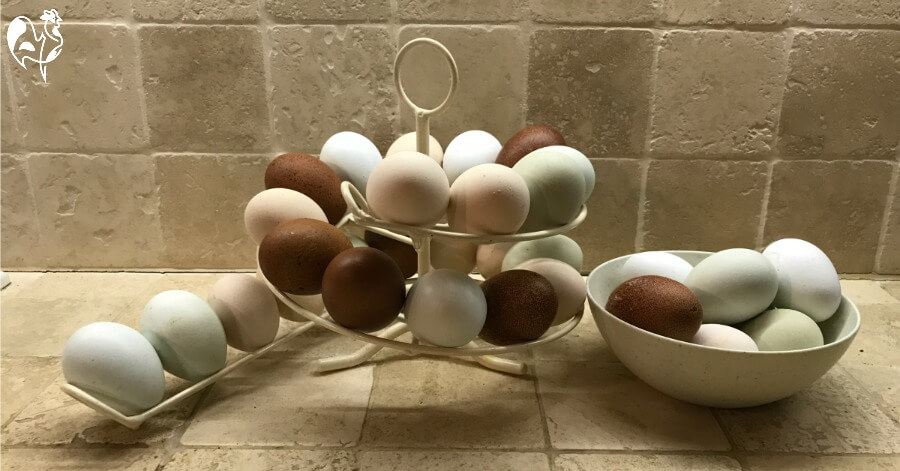
Now take a look at it in winter. The photo below was taken in early December.
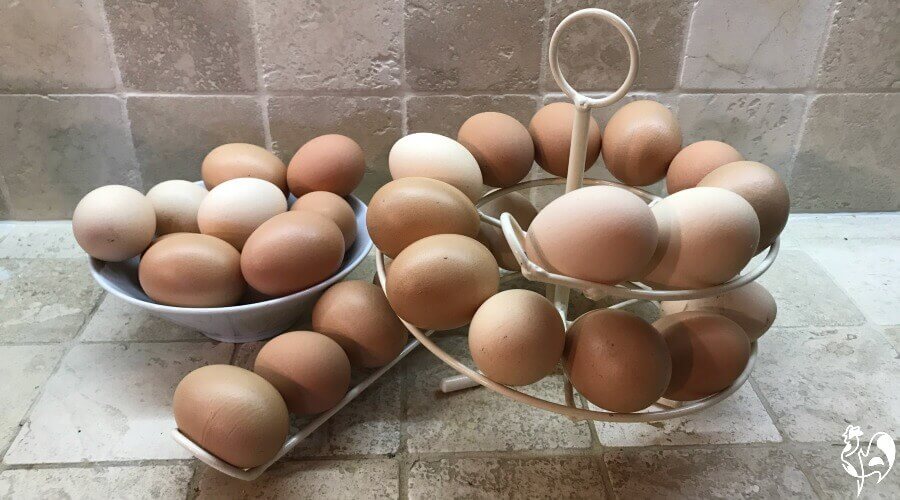
What’s going on?
I don’t use artificial light in my coop, so most of my hens naturally stop laying when the days grow shorter.
But my Red Stars (and sometimes the Leghorns too) keep going. Even in December, they’ll produce enough eggs to keep breakfast on the table.
That’s the real difference: commercial-type breeds like Red Stars have been selected for generations to lay steadily all year round, while many heritage breeds take the winter off.
So if, like me, you prefer not to run electricity into your coop, one solution is simply to choose breeds that suit your goals.
For me, eggs are seasonal: a little scarce in winter, abundant in summer. And I’m happy to let my hens follow their natural rhythm.
Conclusion.
Whether or not you provide light in your chicken coop during the winter is a matter of personal choice. The evidence is that it doesn't physically harm your hens, and may actually help prevent damaging behaviours.
My personal choice is not to add light. Instead, I have a good number of hens I know to be excellent egg-layers for most of the year.
When they slow down or stop laying, I accept that as their time off work.
Whichever you choose, the key is understanding how light affects your hens and making the choice that's the right option for you, your family, and your chickens.
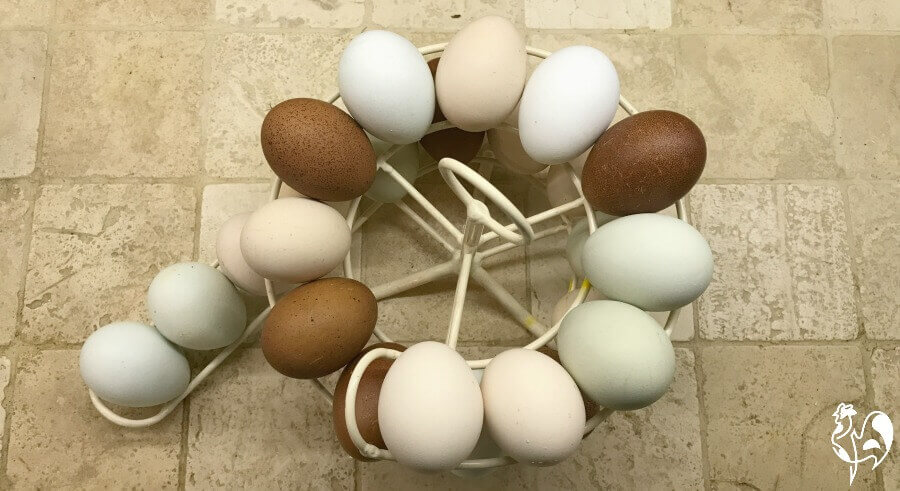 Enjoy those eggs!
Enjoy those eggs!Light in the chicken coop: common questions, answered.
Here are the most common questions chicken keepers ask about lighting their coops, together with clear, research-based answers you can trust.
Do chickens need light in the coop at night?
Do chickens need light in the coop at night?
No. Chickens cannot see in the dark. They need to rest gradually as dusk falls, and darkness to rest properly. Adding light at night can stress them and cause injuries if they can’t find their roosts when lights suddenly go off during the night.
If you choose to add light, always use it in the mornings, never in the evenings.
How many hours of light do hens need to keep laying eggs?
How many hours of light do hens need to keep laying eggs?
The sweet spot is between 14 and 16 hours per day.
Less than 14 hours means laying slows or stops. More than 16 hours and production actually drops.
What kind of light is best in the coop?
What kind of light is best in the coop?
A soft, daylight-style white bulb which mimics natural daylight and keeps hens comfortable.
Avoid coloured lights (like blue or green), and never use heat lamps – they're one of the leading causes of coop fires.
Does adding artificial light harm chickens?
Does adding artificial light harm chickens?
Not if they are adults.
Adult hens can safely have supplemental light, but too much light too soon can harm young pullets.
Wait until they’re at least 16 weeks old (20 weeks is safer) before providing extra light.
Do I have to add light in winter?
Do I have to add light in winter?
Not necessarily.
It's a decision for you to make: do you want to allow your hens take a natural winter rest, or is a steady supply of eggs more important?
If the latter, then adding safe supplemental light can extend laying through the darker months.
More about caring for chickens and eggs.
Sources and further reading.
A lot of "facts" you'll find on the internet are often people's individual views, often based on inaccurate information repeated from poor quality sources.
The information I provide in this article and others is based not just on my own experience, but on evidenced facts from scientific, peer-reviewed research and evidence from highly respected and experienced poultry keepers such as Gail Dammerow.
Some of the sources I have used for this article are these.
1. Bayram, A and Ozkan, S: Effects of a 16-hour light, 8-hour dark lighting schedule on behavioral traits and performance in male broiler chickens. Pub. Poultry Science Association, 2010.
2. Ostrander, C and Turner, C.N.: Effect of various intensities of light on egg production of single comb white Leghorn pullets. Pub. Journal of Poultry Science, 1962.
3. Alphin, R: Impact of light on poultry. Pub. University of Delaware,
4. Jacome, I, et al: Influence of artificial lighting on the performance and egg quality of commercial layers: a review. Pub. Brazilian Journal of Poultry Science, 2014.
5. Er, D et al: Effect of monochromastic light on the egg quality of laying hens. Pub. Journal of Applied Poultry research, 2007.
